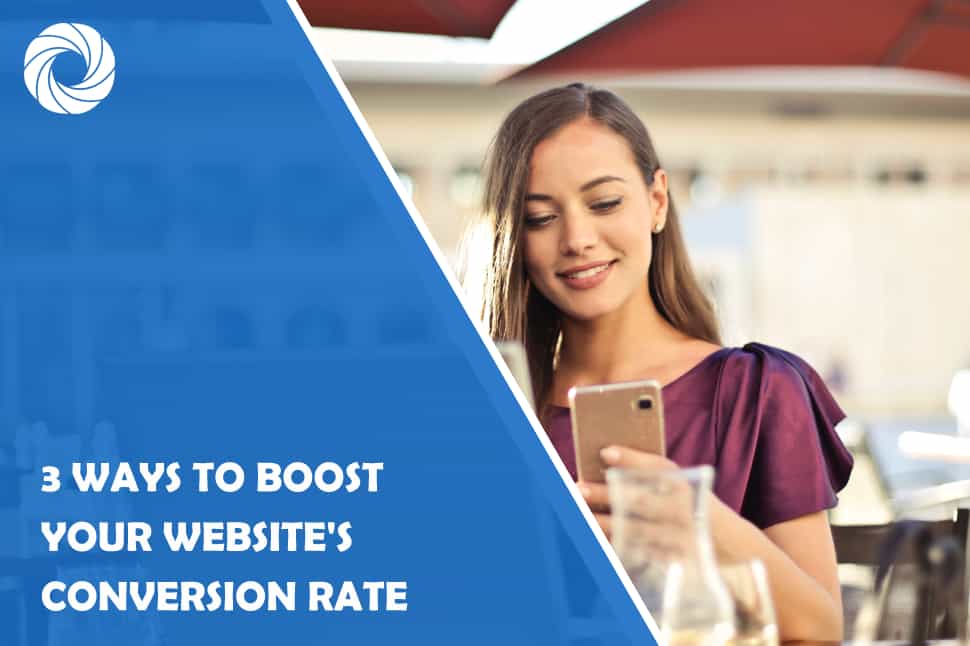To improve your conversion rates, you have to know what works and what does not with your audience.
Your prospects have specific needs, pain points, and wants. So, ideally, your job is to give them an offer that they cannot refuse.
It is alright if people do not convert for the first time. Maybe they do not want to invest in your products and services at the moment. Or perhaps, they will need it in the future.
But by having excellent visuals, an appealing web design, a well-written copy, and an enticing call-to-action, you will stick into the minds of your visitors. Later on, they might come back and convert.
Now, let's look at the most effective ways to boost your conversion rates:
1. Web design
If you feel that your site is underperforming in terms of conversion, then why not take a closer look at your web design?
You only have a few seconds to make an excellent first impression, so make those impressions count. If you miss that, then chances are, users will be moving on to your competitors.
The key here is to consider website usability. According to Sytian Productions (Web Design Philippines), “If your visitors have a hard time to use your website because they can’t find what they’re looking for, then you need to check on your site’s usability.”
Moreover, factors like mobile responsiveness, navigation, and loading speed can all have a significant effect on your conversions.
Mobile Responsiveness

Having a responsive design is your site's ability to adapt, no matter what device or window visitors use. It is easy to navigate, no matter what device people are using ‒ whether its a smartphone, tablet, laptop, or desktop.
Ever since mobile traffic dominated the internet in 2017, having a site that is mobile responsive is a must.
Perhaps, you have visited sites in the past where a pop-up window showed up, and you cannot see the entire screen? Or maybe the CTA was hidden. Did you immediately act on the CTA? Of course, not! That's why having a mobile responsive site is crucial.
Simple Navigation
Your page should be easy-to-read, headings are labeled clearly, and the entire site loads quickly. If users have a hard time figuring out your site navigation, then chances of them heeding your call-to-action (CTA) are significantly reduced.
Loading Speed
Improving your website’s page speed is crucial for enhancing user experience and boosting conversion rates. A faster-loading site not only retains visitors but also positively impacts your lighthouse score—a metric developed by Google to evaluate web page performance. A higher Lighthouse score indicates better optimization, which can lead to improved search engine rankings and increased user engagement. To achieve this, consider optimizing images, leveraging browser caching, and minimizing JavaScript and CSS files. Regularly monitoring your site’s performance using tools like Google’s PageSpeed Insights can help you identify areas for improvement and ensure your website remains fast and efficient.
Research shows that even a delay by two seconds in the page loading time boosts your bounce rates to up to 100 percent.
2. Content
To achieve adequate numbers in your conversions, you need to go back to the basics. Focus on your content. Ensure that your site contains valuable, relevant information. Whether its landing pages, blog entries, photos, and other media ‒ content helps you build the identity of your website.
Offer users something valuable to them, and prove that your products and services are worth trying.
Blog Posts
A content that is high-quality, relevant, and compelling attracts both users and search engines.
Utilize the right keywords so that users will discover them on search engines. So that the moment they land on your blog, they will read high-quality blog posts and articles that show them exactly how your brand can help them with their needs.
Having a blog also shows that you care for your audience. You do not just write about the things that you sell. Instead, you are offering solutions to your audience's problems.
It provides you with a platform to share stories, and connect with your audience at a much deeper level. You can even ask your readers to write about their experiences in the comment section. Do not just write about relevant news and useful tips.
The goal here is to make your audience happy.
Optimize your Content
Before hitting publish, you still need to optimize your content. That requires a little bit of on-page SEO knowledge.
- Create a meta-description that is concise and descriptive.
- Use sub-headers that contain keyword variants.
- Add links to other internal pages.
- Do not forget outbound links to authoritative sites.
- Add images with descriptive ALT text.
Indeed, you cannot precisely predict the kind of attention that you will get in your content. But if you are consistent in creating well-written, personable content that has a lot of insight and information, then your audience will grow over time.
At its very core, your content is your brand. What drives interest in your company is what turns people into brand advocates.
So make your content full of knowledge and information, based on the specific topics that users are searching. Then, present it in a form that is easy to understand.
Remember that crafting great content is dependent on these three things ‒ knowledge, presentation, and promotion.
Images and Videos
Adding other forms of content, such as images and videos, is not necessarily a must. However, it raises interest and improves the “shared value” of your posts.
Humans are highly visual creatures. Therefore, visuals are far easier to digest and remember. Not just that, they are more available to us than ever before.
3. Digital Marketing
Digital marketing has been rising in popularity over the years, thanks to all the significant benefits it brings.
Unlike traditional marketing, you can adjust your digital marketing strategies depending on your business goals and products and services that you offer, no matter how big or small. Its effect on your conversion is substantial, that's why you need to have a solid digital marketing strategy in your arsenal.
Social media
Social media helps you form an initial contact with your audience and boosts your online awareness. Conversion happens once you close in a sale or achieve your conversion goals.
- Create awareness: A majority of your digital marketing budget can be spent on gaining new customers. Therefore, everything begins with awareness. That comes from paid ads, search engines, and social media.
- Encourages advocacy: When you encourage easy social sharing on your site, you are promoting advocacy, whether it is on your blog, post-conversion, or the product page.
- Instills trust: Your customers, especially first-timers, do not trust you. That's why there is a reason that you put a privacy policy or a secure transaction logo in your “Checkout” and “Add to Cart” pages. Having these assures people that they can trust you.
Lack of trust is a conversion killer. Statistics prove that showing a link to Forbes on your site – or any other high-level media – can greatly improve conversions. That's why you need to provide as much social proof as you can.
Ask previous clients to write you an online review. Respond to as many comments and questions.
Most importantly, be transparent. This shows that you have nothing to hide. Taking measures to be open and honest with your operations can go a long way.
Email Campaigns
Who says email marketing is dead? If you think it is, then you are missing out on a lot of marketing channel opportunities.
Take note that crafting highly effective marketing emails means that you should know your audience. Before hitting send, ask yourself, “What will make me click and read this email?” If you are not entirely convinced that it will convert, then revise it before you hit send.
Partner with influencers
Influencer marketing is another smart tactic to help you gain your audience's trust. Work with a face or name that your target audience recognizes, and let them endorse your brand or product.
That's why you must choose the right influencer to work with. That way, you can reap better results in the long run.
Over to You
A lot of marketers and business owners think that once they have reached a reasonable conversion rate, that is already acceptable.
But do not fall into the same conversion complacency. If you want to grow and achieve stellar results, you need to set a goal of increasing your conversion rates month after month. By applying these tips into your business strategy, you will be able to outperform your competitors and get better numbers in the long run.
